Updated: 19-May-2020
Later another Hiller was a well-known helicopter brand and for some prototypes it used motors of its own construction.
-For example, in 1953, for its Hiller HJ-1 helicopter, the same factory built the 8RJ2B ramjet with 20 Kgf of thrust. They fitted one on each end of the rotor blades.
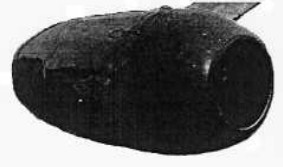
“Hiller ramjet”
-The start was made with a 1 hp engine to rotate the blades at 50 rpm to start the operation of the ramjets.
-The normal rotation speed for lifting was 550 rpm. The given power was equivalent to 45 hp.
-The 8RJ ramjets that were installed on the small Hiller Hornet can be seen in the drawing below.
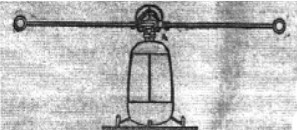
“Hornet”

“Hornet, night view"
-We can see the detail of the engines fitted on the blade tips.
-We see these ramjets, just as mentioned, applied to Hiller's helicopters, especially on the small ones.
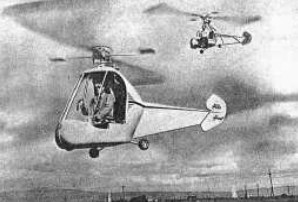
“Two Hiller models with ramjets”
-And below it, we show a spectacular and nocturnal view of the lighting that is created by the combustion of the two ramjets.
-Hiller also did trials with pulsejets.
-At the Smithsonian Museum in Washington we can see the "Six Pack".
-But more interesting is the valveless pulse-jet engine designed by Professor Ray Lockwood that we show below.
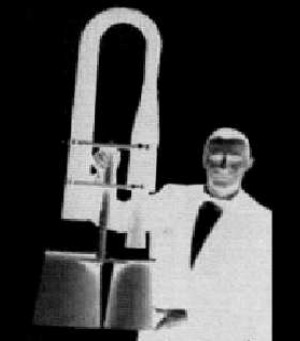
“Hiller-Lockwood” (PeT)
-Ray was head of the essay and project section.
-His pulsejet without moving parts, as we see in the photograph, hold by himself, is a layered conduit with the appropriate dimensions in each section and some augmentators at the end of each outlet, but somewhat separated.
-But we have more material referred to the pulsejets designed by Raymond (Ray) Lockwood.
-His valveless pulsejets in U-shape have been seen repeated in other brands like the Snecma Ecrevisse.
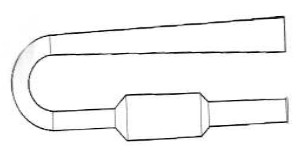
“Basic shape of a Lockwood-Hiller”

“Fitted on a Go-Kart”
-But Snecma went ahead in these designs (1950's), so that the Ecrevisse assembly is also seen on the Lockwood-Hiller (1960's), which we show below.

“Lockwood-Hiller, streamlined”
-These engines work with the "Kadenacy Effect" principle, and reminiscent of the Marconnet.
-The entry of fuel, gas or liquid is done by a deferential conduit and the ignition is caused by a current spark plug.

“Pulsejet layout”
-Sometimes there was information about a "Hiller Six Pack Pulse Reactor Engine". Six grouped pulsejets.

"Another type of Lockwood engine"
-A straight pulsejet with adjustable intakes to achieve precise adjustment and prevent forward thrust returns.
From Appendix 6: The Hiller ramjets on the small Hornet HJ-1 helicopter were very small.
-It is the one shown below that has a metal fitting to attach it to the rotor-blade tip.
-With a diameter of only 7 inches it gave an equivalent power of 32 hp.
-In the cutaway of the drawing we see the flame stabilizer grill and the central injector.

“Hiller-Hornet ramjet”

“8RJ-2B side view”

“HH-120 Hornet version with ramjets” (PiP)
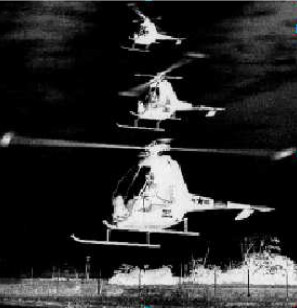
“Three Hiller HOE-1s, with ramjets” (PiP)
-The Hiller ramjets were also installed on the civil HJ-1, a fairing Hornet of which there were two generations towards the 1950's.
-There were still some projects of greater importance, the first one was a kind of "air-crane", the "Powerblade" in the illustration below, with two twin reaction engines on each blade tip.
-Other projects were the "Aerial Carryall" or "flying truck" and Heavy Lifter. They all had Ramjets.
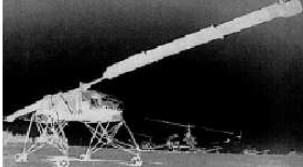
“Hiller's flying crane with twin-ramjets on each blade” (PiP)
Engines of HILLER AIRCRAFT
Model: 8RJ2B estatorreactores
Arquitecture: Ramjet
Chambers:
Fuels:
Feed System:
Ignition:
Thrust:
Weight:
Model: Six Pack projects, (Lockwood)
Arquitecture:
Chambers:
Fuels:
Feed System:
Ignition:
Thrust:
Weight:


